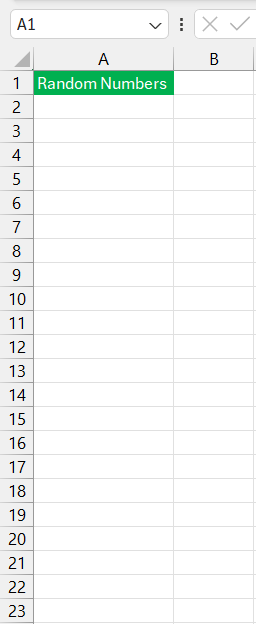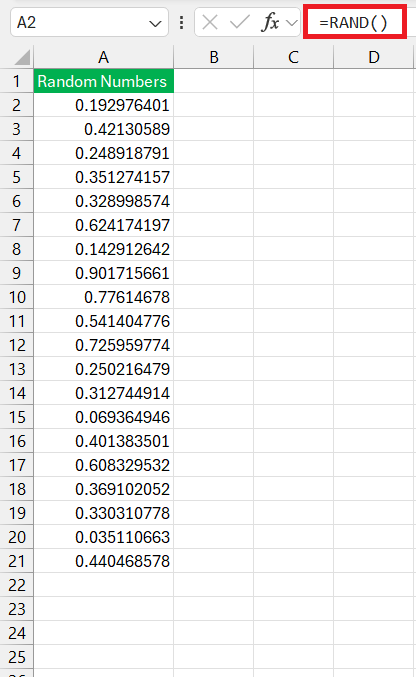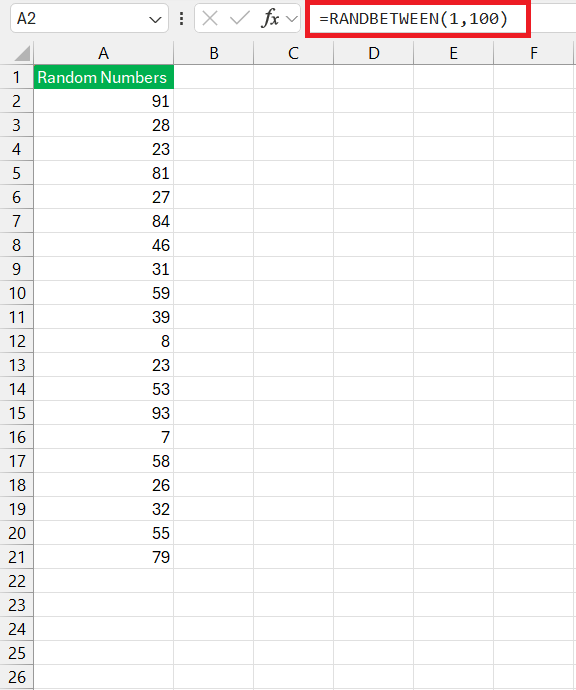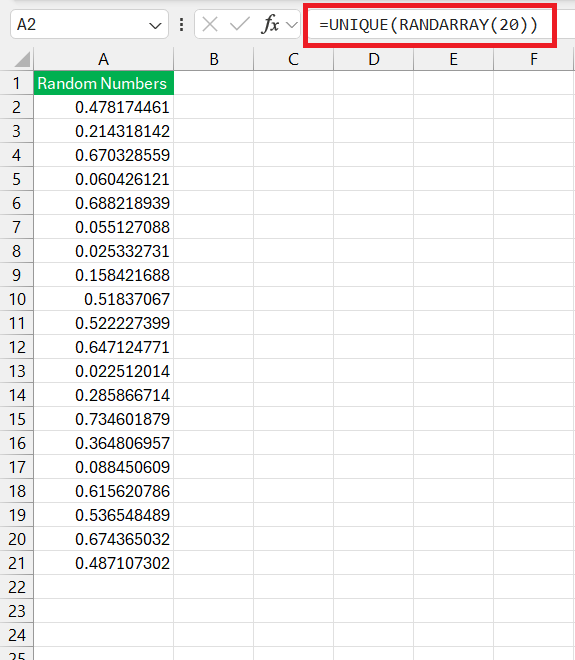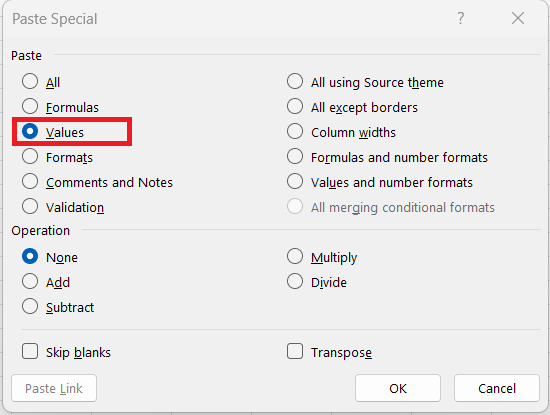Generating random numbers in Microsoft Excel is a straightforward process that can be achieved using built-in functions. Excel provides several functions such as RAND, RANDBETWEEN, and RANDARRAY to create random numbers for various applications, from simple simulations to complex statistical analyses. In this guide, we’ll explore how to effectively use random number 1-100 generator in Excel.
Key Takeaways:
- Excel offers a range of functions like RAND, RANDBETWEEN, and RANDARRAY to generate random numbers, catering to diverse needs from basic simulations to complex analyses.
- The RANDBETWEEN function allows users to generate random integers within a specific range, making it suitable for tasks requiring precise limits.
- For unique random values, Excel’s RANDARRAY combined with UNIQUE can create non-repeating random numbers, ensuring no duplicates in the generated set.
- To prevent random numbers from changing with each recalculation, users can convert the formulas to static values using the “Paste Special > Values” feature, ensuring consistent results for records or analysis.
Table of Contents
Introduction
Unlocking the Power of Excel for Randomization
Excel is not just a spreadsheet application; it’s a powerful tool for randomization that can come in handy in various scenarios. From simulating outcomes to conducting fair draws, learning to generate random numbers is a skill that allows you to unlock new possibilities within your data sets.
Why Generate Random Numbers in Excel?
Generating random numbers in Excel might seem like just a fun exercise, but it serves many practical purposes. Whether you’re a teacher looking to randomly assign student presentations, a researcher needing to select a random sample for analysis, or running a raffle where winners have to be chosen without bias, Excel’s random number capabilities ensure you can tackle these tasks with ease.
The application of these random values is widespread, fitting into fields as diverse as statistics, project management, and even gaming for that element of chance.
Setting Up Your Spreadsheet
Preparing Your Worksheet for Random Number 1-100 Generator
Before diving into the world of random numbers, make sure your Excel worksheet is set up properly. Start with a clean sheet or designate a specific section of your existing sheet for random number generation. To avoid confusion, label your columns and rows accordingly, perhaps with headings such as “Random Numbers” or “Sample Set.
Additionally, ensure that the cells you will work with are formatted to display numbers. Taking these small steps initially will streamline your process and make it far easier to manage the random data you generate.
Understanding Cell References and Formulas
Getting comfortable with cell references and formulas is crucial when working with Excel, especially for tasks like generating random numbers. Each cell in your worksheet has a unique reference—like B3 or A5—that you use to tell Excel exactly where to perform a calculation or where to draw data from. Formulas, on the other hand, are the backbone of Excel’s calculation abilities.
Grasping these basics ensures a smoother experience as you venture into generating random numbers and executing more complex tasks.
The Basics of Excel Random Number Functions
The Simplicity of the RAND Function
The RAND function is beautifully straightforward, offering a hassle-free way to generate a random decimal number between 0 and 1 every time your worksheet recalculates. It’s as simple as typing =RAND() into a cell and press Enter.
No arguments or complicated setups are needed—just this one function does the trick. It’s an ideal starting point for beginners or when you need a random value quickly without specific range criteria.
Utilizing RANDBETWEEN for Specific Ranges
When you need to get random numbers within a specific range, the RANDBETWEEN function is your best friend in Excel. It requires two arguments: the lower and upper bounds of your desired range. For example, =RANDBETWEEN(1, 100) will give you a random integer between 1 and 100.
It’s versatile and can be adapted to a wide array of scenarios where exact limits are essential, making it a function to lean on for many randomization needs.
Ensuring Non-repeating Values for Unique Random Numbers
If you require a set of unique random numbers, meaning no repeats, a bit of ingenuity is needed. By nesting the RANDARRAY function within the UNIQUE function, you can generate an array of non-repeating random numbers. The syntax looks like =UNIQUE(RANDARRAY(n)), where n represents the number of unique random numbers you desire.
However, this method can sometimes result in a smaller array than intended since duplicates are removed post-generation.
Advanced Techniques and Tips
Avoiding Recalculation: Making Random Numbers Static
One of the key challenges with Excel’s random number functions is that they tend to recalculate, changing your values each time you trigger a worksheet update. To ‘freeze’ these numbers, after generating them using RAND() or RANDBETWEEN(), simply copy them and use the “Paste Special > Values” function.
This replaces the formula with the actual numbers, making them static and unchanging, no matter how many times the worksheet recalculates. It’s a vital step if you want to keep a permanent set of random numbers for records, analysis, or reporting.
Practical Applications
Using Random Numbers for Sampling and Data Analysis
Using random numbers for sampling is one of the most powerful applications in data analysis. With Excel, you can select a random subset from a larger dataset, ensuring that your analysis remains unbiased and representative. For example, you might use RANDBETWEEN in combination with the INDEX function to generate random row numbers, which can then be used to select corresponding entries from your dataset. This approach ensures that every individual or item has an equal chance of being chosen, making your sample as random and as valid as possible for statistical analysis.
Creating Randomized Lists and Schedules with Ease
Creating randomized lists and schedules is a breeze with Excel’s random functions. You might need to mix up a list of names for a seating chart or create a random workout schedule. Simply insert a column next to your list, use the RANDBETWEEN function to assign a random number to each entry, and then sort the list by these numbers. Voilà! You have a list that’s been shuffled without any bias. For schedules, you could assign random dates within a range, ensuring your events or tasks are spread out randomly over time.
FAQ
How to generate 1 to 100 numbers in Excel?
To generate numbers from 1 to 100 in Excel, use the RANDBETWEEN function. Simply type =RANDBETWEEN(1, 100) into a cell and press Enter. Excel will return a random integer within this range. Drag the formula down to fill as many cells as you need with random numbers between 1 and 100.
How Do I Generate a Single Random Number in a Desired Range?
To generate a single random number within a desired range in Excel, use the RANDBETWEEN function. Type =RANDBETWEEN(lower, upper), replacing ‘lower’ with the smallest number you want and ‘upper’ with the largest number in the range. For example, =RANDBETWEEN(50, 150) will give you a random number between 50 and 150.
Can I Create a List of Non-repeating Random Numbers in Excel?
Yes, you can create a list of non-repeating random numbers in Excel. Use a combination of functions like UNIQUE and RANDARRAY, or utilize tools such as Ablebits’ Random Generator if you have it. In Excel 365, you could use =UNIQUE(RANDARRAY(n)), with n being the desired count, to generate non-repeating numbers. However, for an exact amount of unique values, consider other methods or add-ins that can guarantee a fixed number of unique random numbers.
What Should I Do If My Random Numbers Keep Changing?
If your random numbers in Excel keep changing and you want them to remain static, you need to convert them from formulas to values. After generating the random numbers, copy the cells (Ctrl + C), then paste them back as values using “Paste Special > Values” (right-click to find the option, or use the Alt > E > S > V keyboard shortcut). This will ‘freeze’ the numbers, preventing them from changing on recalculations.
How does the randbetween function work?
The RANDBETWEEN function in Excel generates a random integer between two specified values you provide as arguments. The syntax is =RANDBETWEEN(bottom, top), where ‘bottom’ is the smallest number and ‘top’ is the largest number in your desired range. Every time the worksheet recalculates, the function produces a new random integer within this range. Keep in mind, if you need the number to stay the same, you’ll have to follow the steps to make it static.
John Michaloudis is a former accountant and finance analyst at General Electric, a Microsoft MVP since 2020, an Amazon #1 bestselling author of 4 Microsoft Excel books and teacher of Microsoft Excel & Office over at his flagship MyExcelOnline Academy Online Course.

